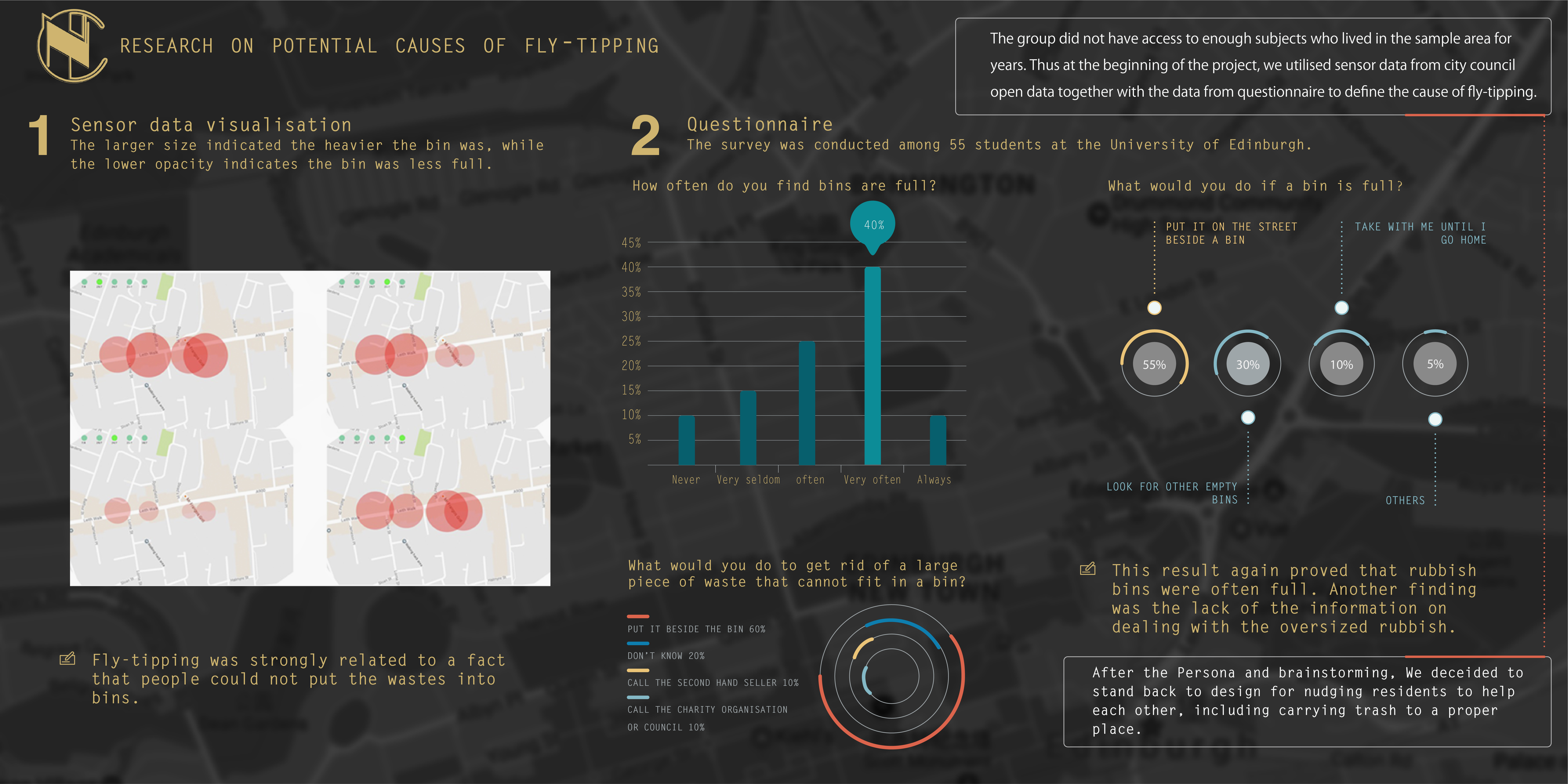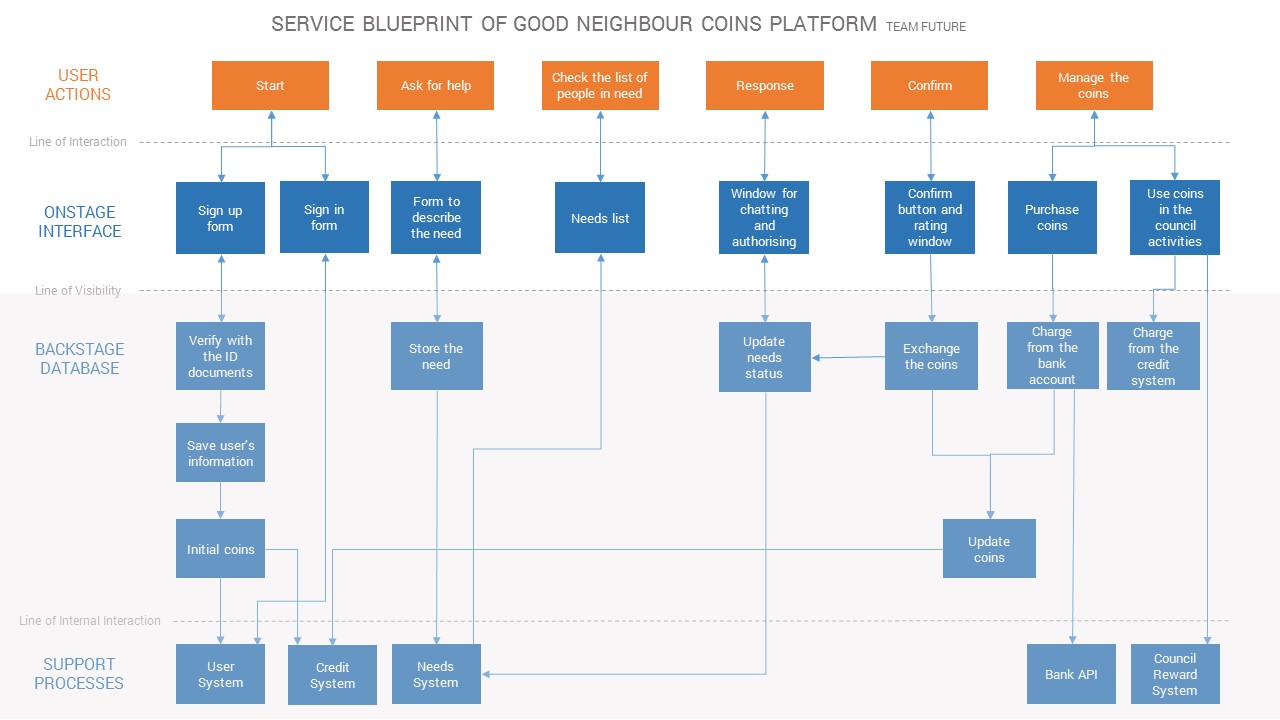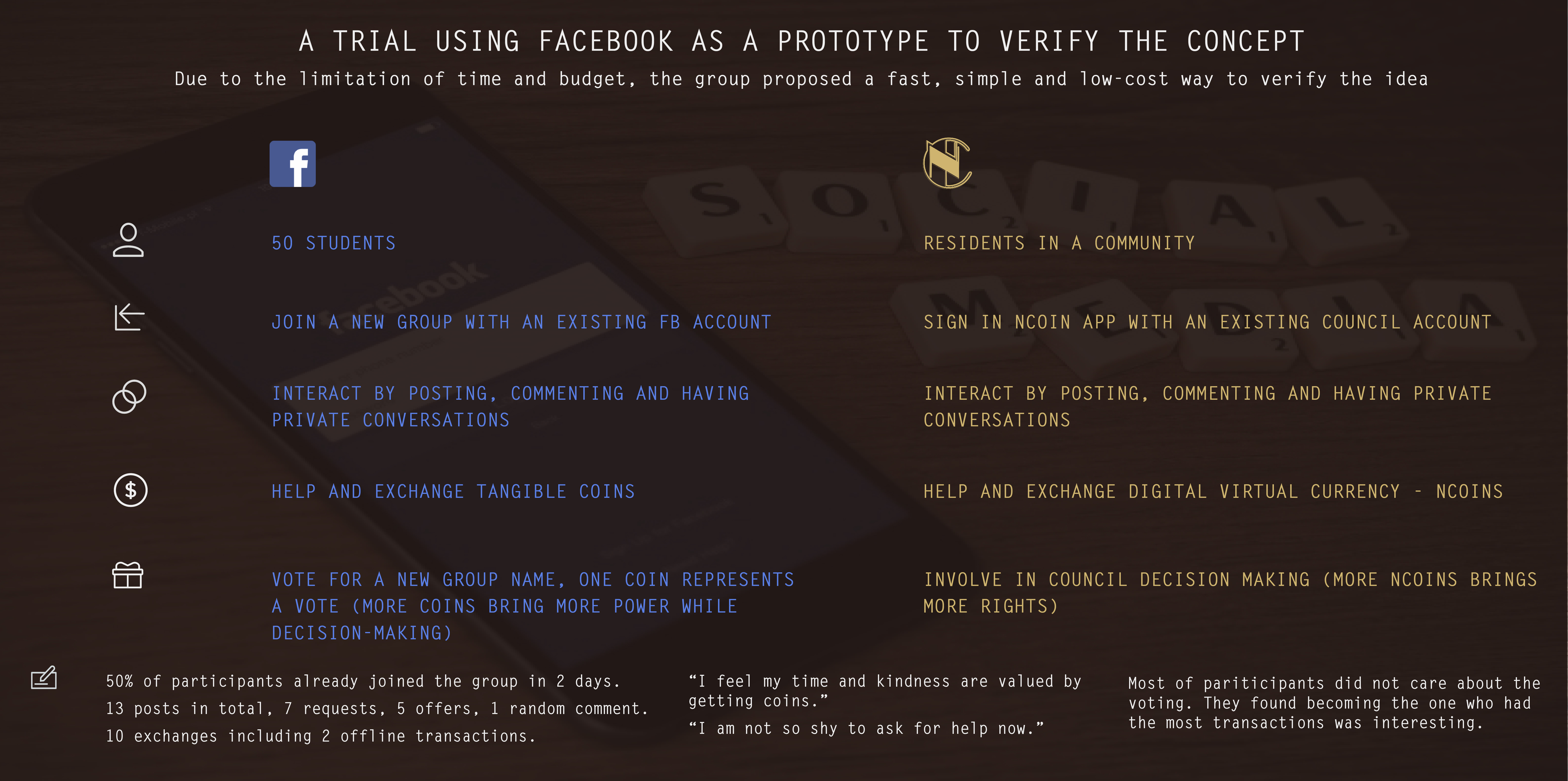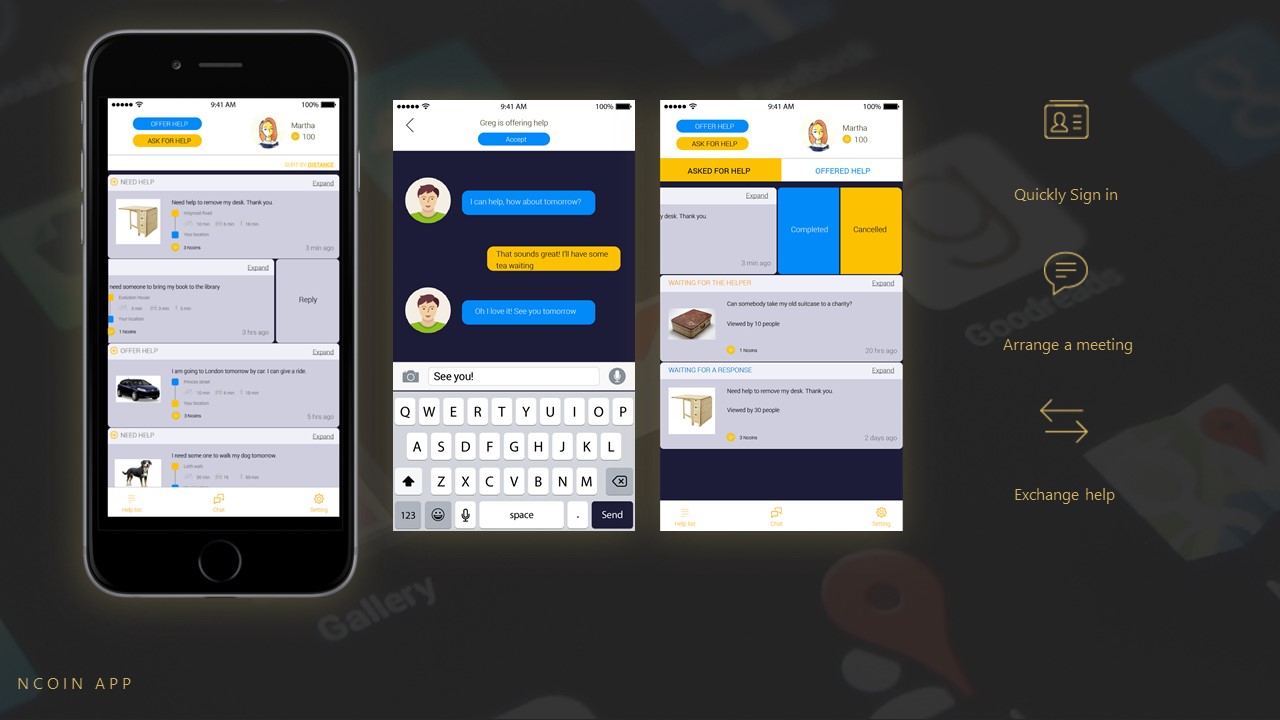NCoins
Background
Edinburgh City Council is looking for solutions to deal with fly-tipping situation. In this course, I utilised different methods to collect data. With quantative and qualitative data, the team generated and verified the concept - using virtual currency to materialise the value of doing good deeds to the neighbours. I used the project as a case study with relevant literature to discuss how data assits the product design process.
Process
Data collections and visualisation -> Questionnaire -> Data-driven Persona -> "As is" - "To be" Brainstorming -> Service BluePrint -> Workshop -> Prototying -> Hi-Fi Proposal.
01
Data Collection and Visualisation
The idea was generated and enriched by Persona design method that was driven by three types of data.
The first dataset was the observations recorded in the city followed by massive machine-generated data (sensors data, visualised by Processing) The larger size indicated the heavier the bin was, while the lower opacity indicates the bin was less full.
The second dataset was collected from about 60 participants.


02
UX design process
The team utilised Persona driven by the existing analysis and hypothesis to understand, describe, focus and clarify users’ goals. Based on the Brainstorming, the team proposed a Service Blueprint to map the user touch points to system design.
03
Facebook Workshop
The limited prototyping resources prevent the researchers from implementing a working prototype with mentioned functions. In this case, the team adapted the prototyping process to a workshop, utilising an existing online platform - Facebook Group.


03- Results
The result showed that half of the class had joined the DI Trading Help group in two days. There were 13 posts in total, 7 of which were requests while 5 were offers. A gambling post evoked our awareness of the potential misuses. There were 10 exchanges including two offline transactions. The contents of the requests and offers were able to be mapped into the behaviours and actions in the reality, for example, helping to bring a book to the library was aligned to helping to transport the trash. Some participants mentioned that they did not often ask for help. But with the NCoins, they were able to reward others’ time. Similarly, they also felt that their time and kindness were valued by getting the NCoins. Another important finding from the interview was that most of them did not care about the voting, however, they found becoming the one who had the most transactions was interesting. This suggested a ranking of successful transactions could be implemented as rewards instead of the financial reward or voting authorisation, which was similar to the credits provided by many platforms such as Stack Overflow and Quora.
04
UI design at different Fidelity

Final Proposal

Reflection
At the early stage of product design, I worked on the data collection, idea generation & verification and interface design. Using different design methods such as Persona, As-Is & To-Be diagram, Service blueprinting etc, I came up with the paper prototype, the low-fidelity prototype and the high-fidelity prototype and tested them with users. I gained knowledge of using data to design a product platform to serve a certain phenomenon. Also, running a workshop is a new method for me to test with users with the limited time and budget.